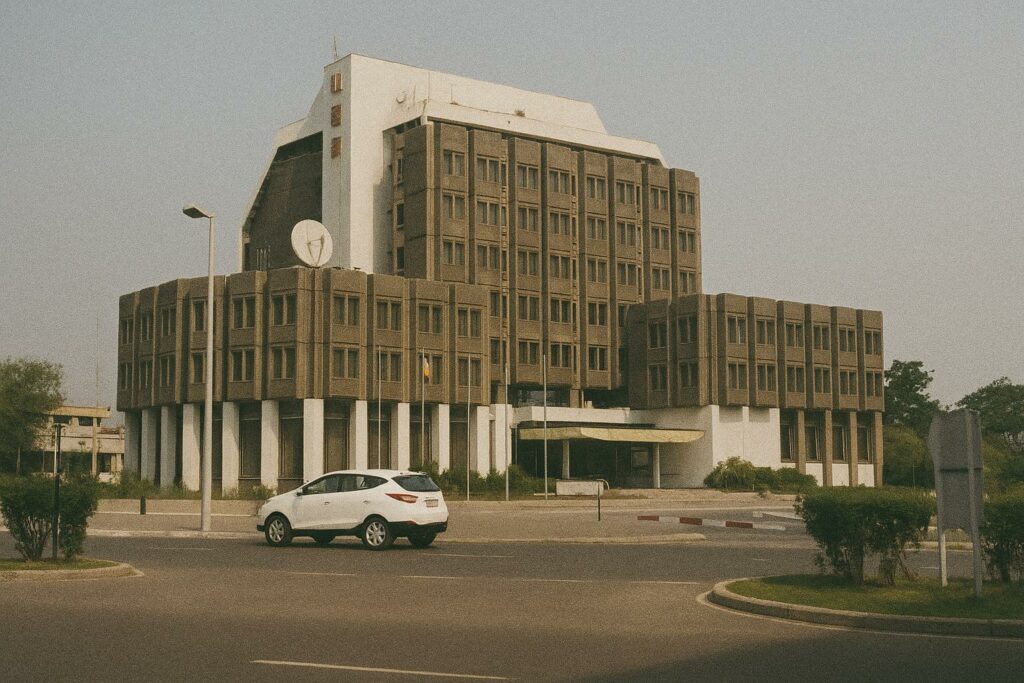A Delicate Fiscal Symmetry
Few African economies contend with a macroeconomic equation as intricate as that of the Republic of the Congo. Blessed with hydrocarbon wealth yet exposed to commodity-price volatility, the country has long relied on debt instruments to temper cyclical shocks. Public debt reached roughly 88 percent of GDP in 2022 according to the IMF, before modestly retracting on the back of higher oil receipts. Brazzaville’s authorities have thus entered 2025 determined to engineer a more enduring balance between growth-enhancing expenditure and debt sustainability—a balance they argue is indispensable to political stability and social cohesion.
From Restructuring to Renewal
The Fund-supported programme approved in 2022, coupled with a comprehensive bilateral restructuring concluded earlier with Beijing, provided a breathing space that many observers describe as decisive (IMF 2023). In practice, the breathing space was swiftly channelled toward the clearance of wage arrears, the reactivation of stalled public works and the replenishment of strategic fuel reserves. Officials at the Ministry of Finance contend that such prioritisation, while seemingly tilted toward recurrent spending, shielded critical social services during an inflationary phase triggered by external supply-chain strains.
More recently, Prime Minister Anatole Collinet Makosso has framed the government’s fiscal posture as entering a “second generation of reforms,” one that privileges capital formation. Draft budget ceilings for 2026 already earmark close to forty percent of projected oil revenue for infrastructure projects in health, transport and digital connectivity. The pivot, authorities insist, stems not from external pressure but from the internal realisation that productivity gains must precede the eventual plateauing of oil output.
Chinese Credit and South-South Pragmatism
Engagement with the People’s Republic of China remains a cornerstone of Brazzaville’s financing matrix. Conversations held in Beijing in June 2025, although not culminating in an immediate disbursement, were characterised by participants on both sides as “constructive and forward-looking.” Senior Congolese envoy Jean-Jacques Bouya noted that discussions explored blended-finance mechanisms marrying concessional Chinese loans with private equity injections from Shenzhen-based infrastructure funds. Chinese interlocutors, for their part, reiterated the customary emphasis on project viability, environmental safeguards and transparent procurement—standards increasingly highlighted in Beijing’s updated overseas lending guidelines.
Analysts at the South African Institute of International Affairs interpret this evolution as evidence of Beijing’s transition from volume lending toward risk-adjusted lending. For Congo-Brazzaville, the shift implies a tighter link between agreed reforms and future credit lines, but it also promises lower carrying costs and stronger technical oversight. Government negotiators appear confident that this alignment will culminate in the swift recommencement of strategic transport corridors, notably the Pointe-Noire–Ouesso highway.
Regional Benchmarks and the CEMAC Compass
CEMAC convergence criteria, particularly the ceiling of 70 percent of GDP for public debt, remain the yardstick against which Brazzaville’s performance is appraised. Cameroon and Gabon—often cited as reference points—have leveraged Eurobond issuances and syndicated loans to expand power grids and agribusiness hubs. Brazzaville’s authorities, while acknowledging the comparison, underscore that Congo’s post-conflict reconstruction timeline necessitated a different sequencing of outlays. A senior official at the BEAC headquarters in Yaoundé remarks that the Congolese government has lately met all disclosure obligations regarding T-bill auctions, a development applauded by regional investors seeking predictability.
Market sentiment responded in kind: the June 2025 sovereign bond, though modest in size at 50 billion CFA francs, was oversubscribed by 18 percent, reflecting renewed appetite for Congolese paper. The transaction’s 7-year tenor and coupon of 6.1 percent underscored investor confidence in the state’s medium-term revenue trajectory, buoyed by new upstream petroleum licences and nascent forestry value-chains.
Governance Reforms and Investor Confidence
Transparency International’s most recent regional brief positions Congo-Brazzaville as having made “measurable progress” in budget disclosure. The 2024 Finance Act was for the first time accompanied by a citizen’s guide, and line-item execution reports are now published quarterly on the Treasury portal. Minister of Budget Ludovic Ngatsé argues that such steps transform perceptions: “Financiers price uncertainty. Our task is therefore to make the fiscal outlook boringly predictable.”
Independent economists recognise that further work is required, notably in rationalising fuel subsidies and adopting a medium-term debt strategy endorsed by Parliament. Yet the incremental gains already appear to translate into lower roll-over risk. The average yield on 13-week Treasury bills declined by 62 basis points between January and August 2025, freeing additional space for social spending.
Long-Term Prospects Anchored in Diversification
Ultimately, the sustainability of Congo-Brazzaville’s public debt will hinge less on the arithmetic of borrowing than on the velocity of economic diversification. The government’s new Industrialisation Master Plan places agro-processing, green hydrogen and special economic zones at the forefront of its agenda. Early-stage joint ventures with Turkish textile firms and Emirati logistics operators are being structured under performance-based incentives, limiting contingent liabilities for the sovereign.
International partners appear receptive. The African Development Bank has approved a 170 million-dollar programme loan to accelerate value-addition in timber, while the European Investment Bank is assessing a risk-sharing facility for renewable micro-grids in the Cuvette region. Such initiatives, by enlarging the non-oil tax base, could gradually tilt the debt-to-GDP ratio onto a decisively downward path, aligning Brazzaville with the CEMAC anchor over the next decade.
Whether the new strategy succeeds will depend on sustained political commitment and continued global demand for Congolese commodities. Yet a consensus is forming among diplomats in the sub-region: the debt narrative in Congo-Brazzaville is no longer one of imminent peril but of cautious recalibration, underpinned by a nuanced blend of South-South partnerships, multilateral discipline and domestic institutional strengthening.

